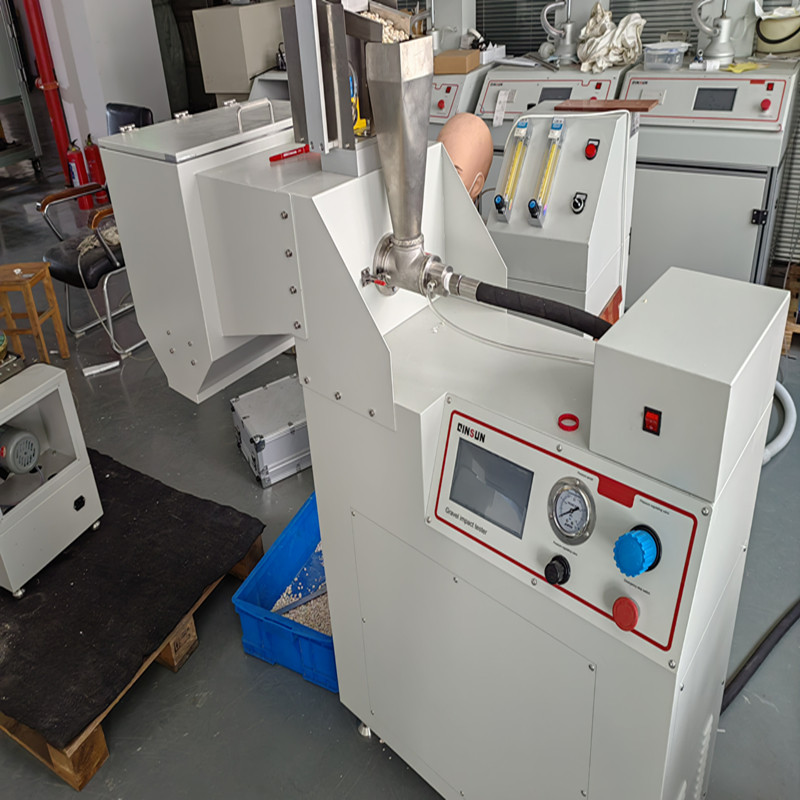
Stone Chip Resistance Gravelometer operation
2024/04/18
Applicable scope:
Used to accurately reproduce the breakage phenomenon caused by splashing sand and gravel, suitable for testing the adhesion failure of external coatings, testing the adhesion failure between different layers in coating systems, testing the brittle thickness of hard glass materials, optimal coating film thickness for anti stripping, and testing the anti stripping, collision, and wear resistance of plastics and glass.

Applicable standards:
GMW1407, JISM0141, TL211-6, GME60268, ASTMD3170, SAE J400, FORD, Chrysler 463PB-39-01, GMW14668-3.4.9, Chrysler 463PB-52-01, GM9119P/9508P/9619P, MazdaMESMN601C, Nissan, Volkswagen, Toyota, ISO20567-1
Operation:
Firstly, prepare the accessories and test samples;
Open the door of the impact test chamber;
Load the test sample into the fixture and secure it;
Tilt the fixture above the scale position and lock it;
Lock the door of the impact box;
Put the prepared crushed stones into a stainless steel funnel;
Turn on the power switch and enter the LCD screen operation interface;
Set the impact time and pressure;
Open the funnel valve;
The high-speed airflow below the feeder forms a vacuum, and the crushed stones are sucked into the gun assembly;
The jet airflow is directed towards the test sample in the box;
After hitting the test target, the crushed stones fell into the gravel collection box;
After the test is completed, open the door of the test box;
Take out the sample, analyze the degree of damage of the sample, and judge its resistance to stone impact performance;
Test completed, turn off the instrument;
At the end of the experiment, remove the sample and analyze the degree of damage of the sample based on the residual stone impact marks on the sample to determine its resistance to stone impact.
Previous: Taber 1750 wear-resistant tester operation
N e x t : Current situation of fabric thermal and moisture comfort testing



